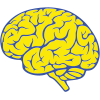ACS Chem Neurosci. 2025 Jan 31. doi: 10.1021/acschemneuro.4c00720. Online ahead of print.
ABSTRACT
Acute ischemic stroke (AIS) is a significant brain disease with a high mortality and disability rate. Additional therapies for AIS are urgently needed, and neuroplasticity mechanisms by agents are expected to be neuroprotective for AIS. As a major active component of Salvia miltiorrhiza, salvianolic acid A (SAA) has shown potential for preventing cardiovascular diseases. However, there is no evidence of the long-term effect of SAA on ischemic injury or its mechanism. Therefore, using rats and mice, we systematically investigated the impact of SAA on AIS from the perspective of neuroprotective and neuroplasticity. Here, we report that SAA induces a long-term depression (LTD)-like process in synapses. This antiexcitotoxicity action supports the SAA effect, including alleviating infarction and promoting blood circulation in photothrombosis and middle cerebral artery occlusion (MCAO) models. Furthermore, repeated positron emission tomography/computed tomography (PET/CT) imaging and behavioral assessments two months after AIS induction reveal that acute treatment of SAA promotes recovery from disrupted whole-brain glucose metabolism and impaired spatial memory. These data suggest that acute treatment of SAA is neuroprotective by improving long-term functional outcomes through a synaptic LTD-like process, providing a promising adjunct to current therapies to enable better recovery for AIS.
PMID:39888337 | DOI:10.1021/acschemneuro.4c00720

Recent Comments